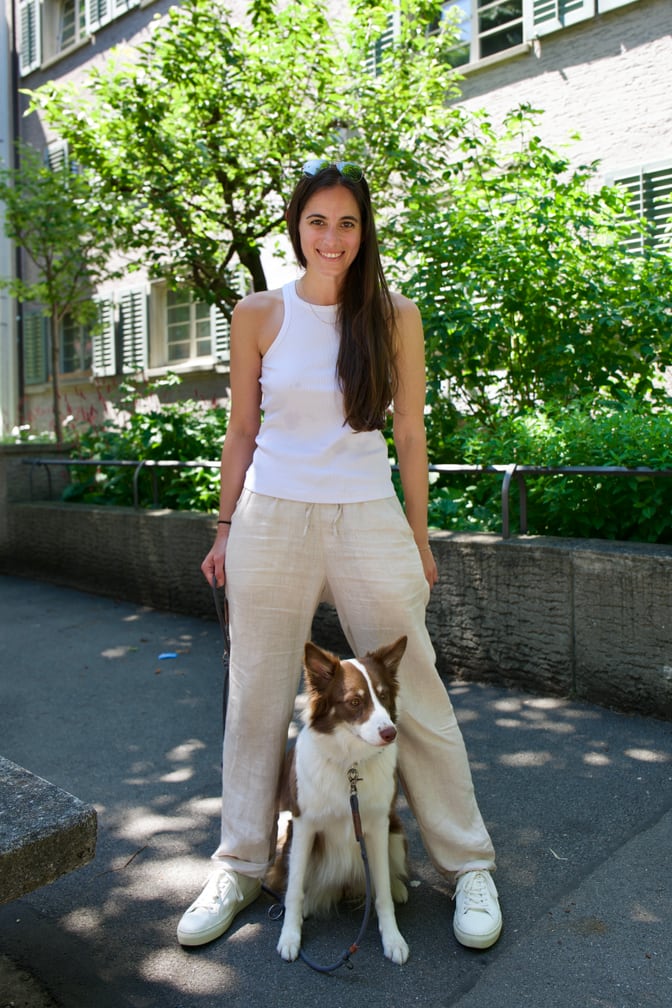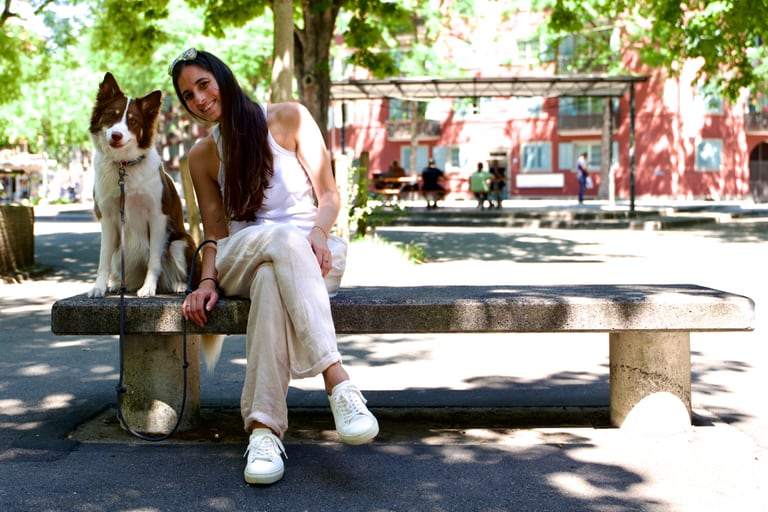Of course like ANY diligent dog-pawrent to be, I threw myself into learning. Susan Garett’s podcasts, "Inside of a Dog" by Alexandra Horowitz and other books about dog behaviour and training were my daily companions weeks before getting Kira home.
Like ANY organised (or mentally insane) person, of course, I had my (waterfall) plan with my checklist of what we were going to do and train on a daily basis.
According to my well prepared and thought through plan:
- Kira would be house broken (or potty trained) within 4-6 weeks
- We would have perfect recall by the time she was 6 months old and we would be able to go on walks off leash by the Limmat
- We would do agility courses (for dogs not for IT) even if it meant travelling 2h per day
In reality, I spent my first months sleep deprived, crying three times a day and googling articles about “puppy blues” and “should I give my puppy back” on a daily basis. I relied much more on my (amazing and supportive) friends than I had anticipated. And the idea of throwing my puppy out of the window occurred to me more times than I would like to admit.
I could see how my waterfall plan was falling and contributing to me feeling miserable. I would have been at complete loss, if not for the introduction to Kanban training that I was doing during my first week with my new puppy.
Let's go Agile
Inspired with the training, I made a Kanban board in my living room, putting things in different categories:
- The backlog
- Doing (daily/weekly/monthly)
- Repeating
- Iterating
- Mastered

Every morning I structured my plan according to it. I found what worked not only for Kira but also for me. I iterated on a regular basis, testing and adapting to her needs and my resources, instead of imposing my plan on us.
After some time together and user research, I discovered I had hyperactive, sensitive dogs and (positively) reactive dog. What was important for her was to get used to the city, sounds, public transport, people and other living creatures. Hence, I had to create and prioritise a whole new epic, which I initially did not even have on my radar.
2 years later our status is the following:
- House broken yes but took 1 year and there are still occasional accidents – sometimes the code regresses
- Perfect recall – in development/maintenance since 1.5 years, gots de-prioritised on multiple occasions
- Off leash walking at the Limmat - go live indefinitely delayed
- Agility training– no buy in from the stakeholders & limited resources of the PO
Our most recent feature was a 4 week sprint for implementing recall and here is how it looked:
- Four weeks of intense sprinting (1x 1.5h theory + 4x 45 minute classes in person)
- Dailies: learning and laying the basics for different exercises
- Building an MVP: from classical conditioning to the recall word to recalling in a controlled environment
- At the end of four weeks we had a solid ground to continue on building the feature
Next steps
- Continue with the dailies (3x 5 minute daily exercises)
- Security upgrades: practising exercises on leash in different controlled environments
- MMP: practising on leash in an uncontrolled environment & slowly raising levels of distractions (dogs, water, etc.)
- Release / market go live (realistic timeline in 6-12 months): good recall in an off leash, uncontrolled and distracting environment
And though the list of my initial goals is basically unchecked Kira and I are very happy. Do I still think about finding her a new home and giving up on this project? Yes, around once a year when things get overwhelming. I learned to do sprint breaks and instead of constantly implementing and developing new features. Sometimes we are just in support and maintenance.
I’ve let go of perfectionism and came to the conclusion that I will probably never get through “all my tickets in the backlog and all the bugs” and that’s okay. If something occurs once a year and does not cause big harm, then it’s not a priority for us. I constantly have to adapt my sprint goals and yearly plan, when new information surfaces. I learned that it’s best to fail fast and early rather than to implement behaviours that bring no value or even harm the collaboration. I learned that I don't get to dictate my wishes but my dog and I are a team and work together.
I often have to de-prioritise the feature I really want and am working on, due to limited resources and security upgrades that are more important. I adapt on a regular basis to both Kira's and my needs. And that is how I do agility in my dog training.


